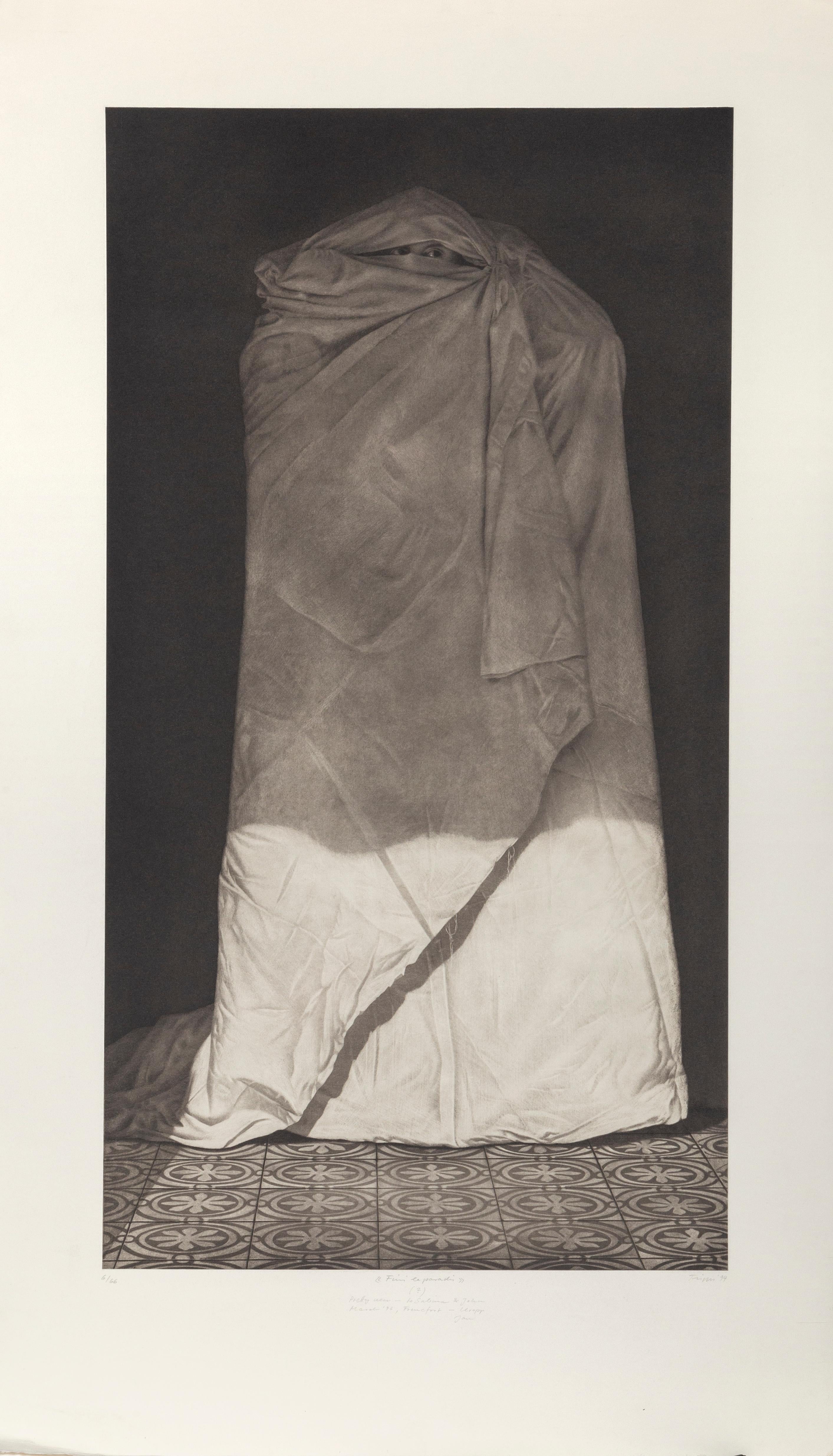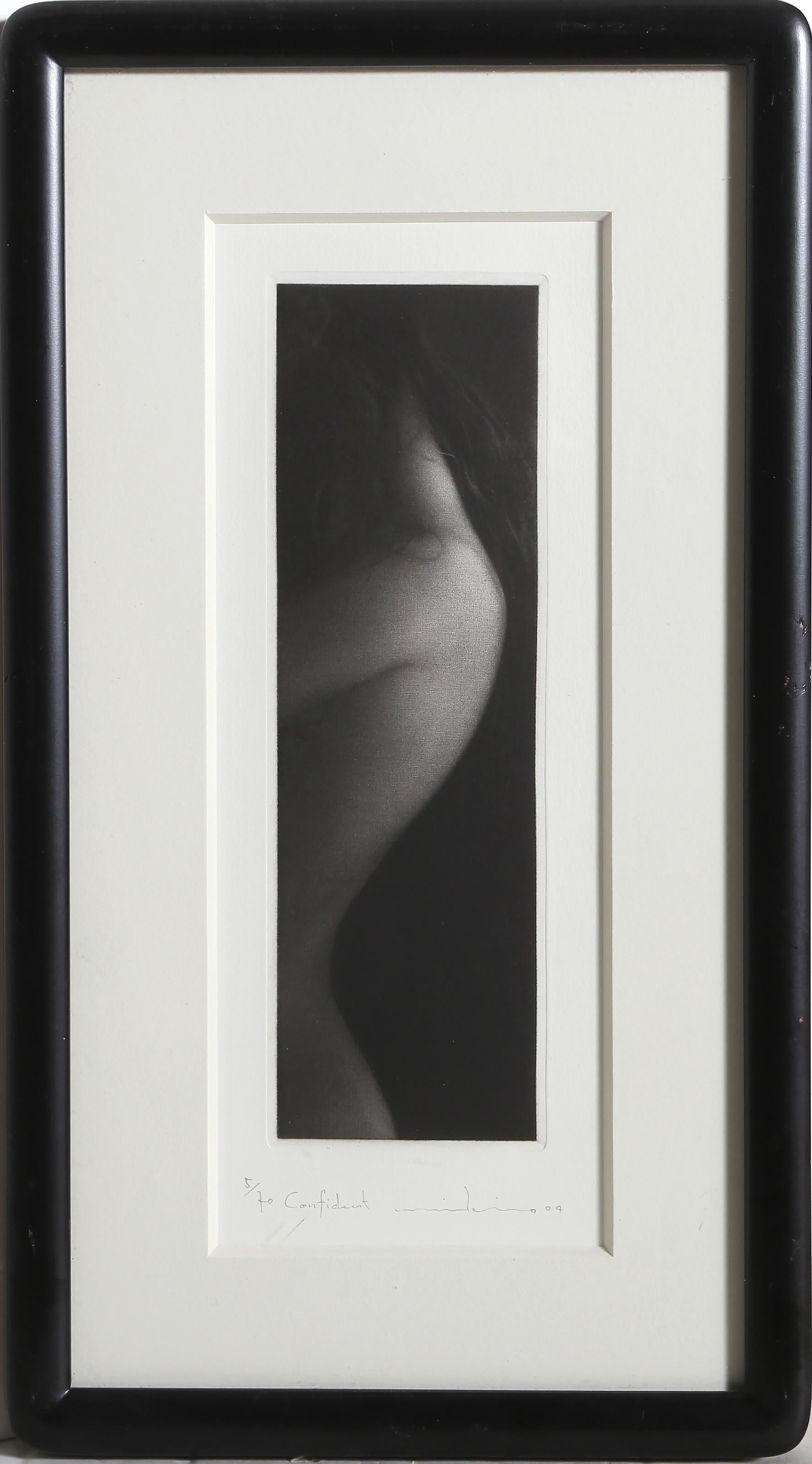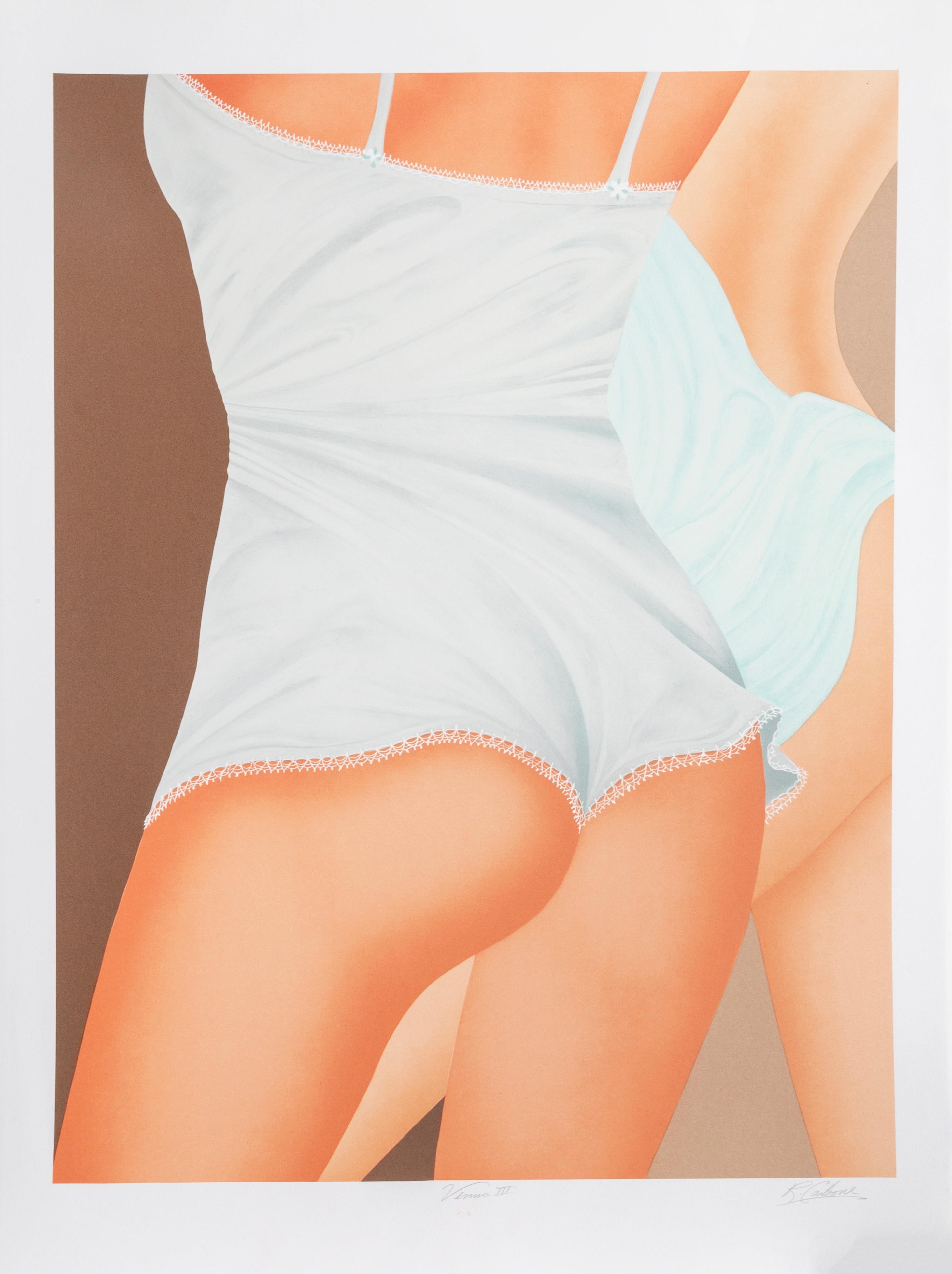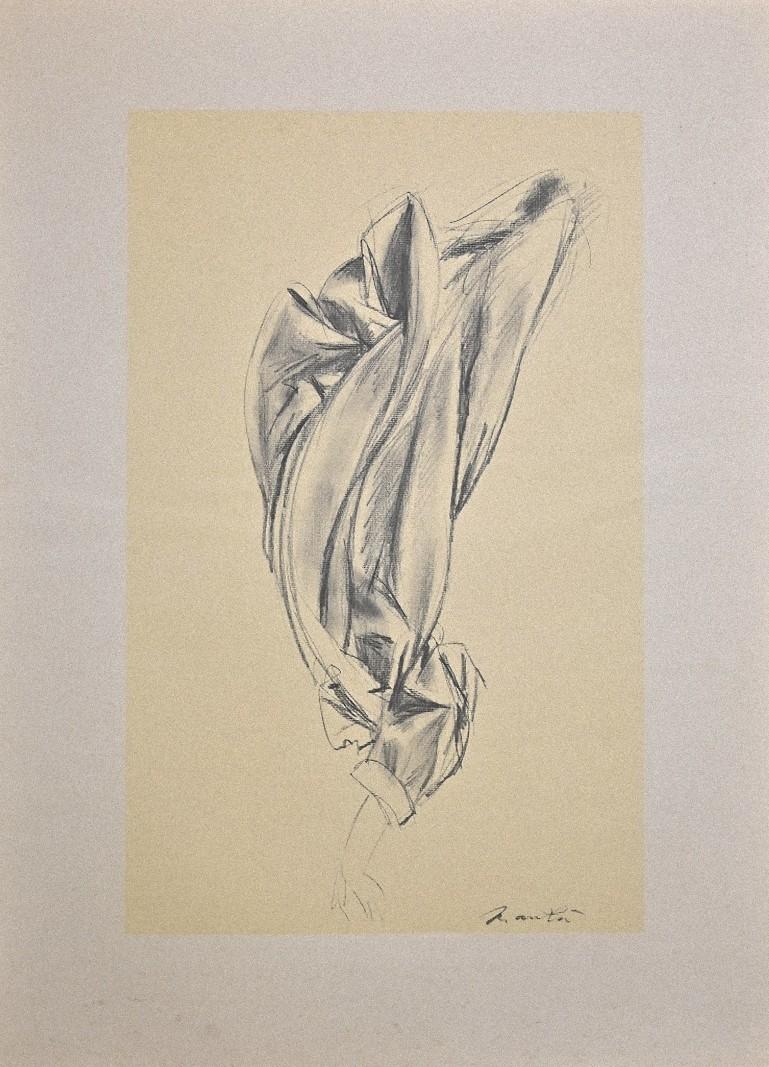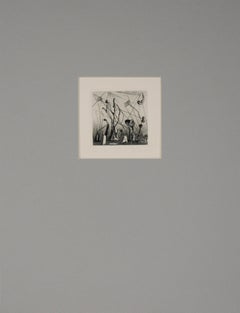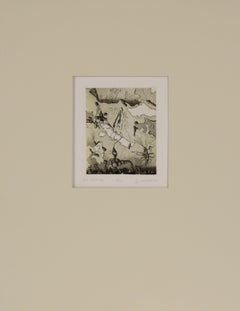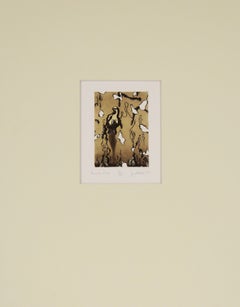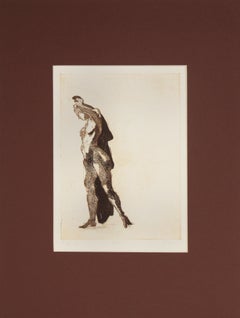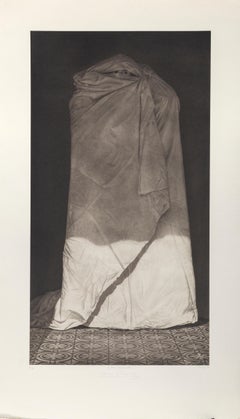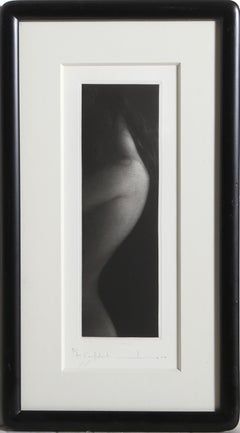Items Similar to "Folding Linen III" - Limited Edition Lithograph, 20/75
Want more images or videos?
Request additional images or videos from the seller
1 of 9
Robert Baxter"Folding Linen III" - Limited Edition Lithograph, 20/751985
1985
$2,520
$3,15020% Off
£1,952.77
£2,440.9720% Off
€2,216
€2,77020% Off
CA$3,611.81
CA$4,514.7620% Off
A$3,966.48
A$4,958.1020% Off
CHF 2,041.79
CHF 2,552.2420% Off
MX$47,460.09
MX$59,325.1120% Off
NOK 25,996.51
NOK 32,495.6420% Off
SEK 24,362.60
SEK 30,453.2520% Off
DKK 16,550
DKK 20,687.4920% Off
About the Item
Beautiful figurative limited edition lithograph by Robert Baxter (American, b. 1933). Signed and numbered "R. Baxter 20/75" lower left. Displayed with white mat and black metal frame. Image size: 20"H x 32"W.
Draughtsman, painter and printmaker, Robert James Baxter was born on 30 November 1933 in Milwaukee, Wisconsin. He received his B.S. in art in 1956, and both his M.S. in painting and his M.F.A. in painting in 1960 from the University of Wisconsin at Madison. Baxter also studied with Aaron Bohrod and John Wilde. He relocated to San Diego, California in the early 1960s and began teaching at San Diego State University in 1962. In 1969, Baxter went to Rome on sabbatical and decided to remain in Italy, living there for a number of years. He eventually returned to Southern California and was Professor of Art at San Diego State University until 1973. As a printmaker, Baxter worked with the Workshop of Ernest F. de Soto and Editions Press, both located in San Francisco.
Baxter became a member of the National Academy of Design in 1993 and was elected a full Academician in 1994. He was awarded a Louis Comfort Tiffany Foundation Grant in 1972, and Pollack-Krasner Foundation grants in 2000 and 2005.
His work in the Art Institute of Chicago; Achenbach Foundation for Graphic Arts; Chazen Museum of Art; University of Wisconsin; Cummer Museum of Art and Gardens; Fogg Art Museum at Harvard University; Frye Art Museum; Gruenwald Center for Graphics Arts; Hirshhorn Museum and Sculpture Garden; Hood Museum at Dartmouth College; Instituto Nazionale Per La Grafica in Rome; Metropolitan Museum of Art; Milwaukee Art Museum; National Academy of Design; Phoenix Art Museum; University of North Carolina at Greensboro; San Diego Art Museum; San Francisco Museum of Modern Art; Vatican Pinoteca, Rome; Whitney Museum of American Art; and the Wichita Falls Museum of Art
- Creator:Robert Baxter (1933, American)
- Creation Year:1985
- Dimensions:Height: 28.75 in (73.03 cm)Width: 40.5 in (102.87 cm)Depth: 1 in (2.54 cm)
- Medium:
- Movement & Style:
- Period:
- Condition:
- Gallery Location:Soquel, CA
- Reference Number:Seller: JT-66741stDibs: LU5427724692
About the Seller
5.0
Platinum Seller
Premium sellers with a 4.7+ rating and 24-hour response times
Established in 1986
1stDibs seller since 2014
3,039 sales on 1stDibs
Typical response time: <1 hour
- ShippingRetrieving quote...Shipping from: Soquel, CA
- Return Policy
More From This Seller
View All"June A" - 1975 Surrealist Lithograph on Paper
Located in Soquel, CA
"June A" - 1975 Surrealist Lithograph on Paper
1975 surrealist figurative lithograph on paper by Jim Crabb (American, b. 1947). Black spotted figures appear to be ascending upward, ...
Category
1970s Surrealist Figurative Prints
Materials
Paper, Ink, Lithograph
"No Exit-ing" - 1976 Lithograph on Paper
Located in Soquel, CA
"No Exit-ing" - 1976 Lithograph on Paper
1976 surrealist lithograph titled "No Exit-ing" by Jim Crabb (American b. 1947). Abstracted figures of black, white and grey take up the lit...
Category
1970s Surrealist Figurative Prints
Materials
Paper, Ink, Lithograph
"Avant Hier" - Lithograph on Paper
Located in Soquel, CA
"Avant Hier" - Lithograph on Paper
Abstract expressionist lithograph on paper depicting figures, with clouds of white by Jim Crabb (American, b. 1947). Hues of brown take up the pap...
Category
1970s Contemporary Figurative Prints
Materials
Paper, Ink, Lithograph
"Study 6" - 1975 Figurative Lithograph on Paper
By Jim Smyth
Located in Soquel, CA
"Study 6" - 1975 Figurative Lithograph on Paper
Abstract figurative lithograph by Jim Smyth (American, b. 1938). The nude figure is seen with one hand above her head, holding a cloth, as she gazes down.
Numbered, titled, signed and dated along bottom. "5/12", "Study 6", "Smyth 75."
Presented in a brown mat.
Mat: 16"H x 12"W
Paper: 10 1/2"H x 8"W
Image:9 1/4"H x 6 1/2"W
Jim Smyth has studied at the Academia de Belle Arti in Fiorenza, Italy, Ecole des BeauxArts in Geneva, New York Academy, and the Art Students League. He is also a graduate of UC Berkeley with a degree in Fine Art.
Although academically trained, Smyth practices and teaches a more impressionistic style of painting, focusing on the Alla Prima technique.
He is particularly knowledgeable about drawing, perspective, color theory and the human figure, his passion. Smyth, with extensive academic knowledge, has a profound love of all human representations as illustrated by his humorous quick sketches from life. He also practices and teaches oil painting and pastels.
When not in Provence, or Southeastern France, Smyth teaches intensely in art schools, art centers and several colleges in the Bay Area. He is a beloved instructor and his classes fill in quickly as he is very knowledgeable.
On his return to the United States, he began studying with Mr. Alanson Appleton at the College of San Mateo, San Mateo, California. Smyth was a founding member of the Appletree Etchers, Inc., an etching print shop organized by Mr. Appleton and his students to develop and promote color intaglio. Smyth served as Master Printer at the studio for many years perfecting the techniques of intaglio and developing the color theories of Mr. Appleton as applied to the deeply etched plate.
Smyth received his degree from the University of California, Berkeley, in 1972 and holds the California Community College Certificate and an Adult Education Certificate. Smyth was invited to teach "Anatomy for Artists" at Foothill College, Los Altos Hills, California, as a result of his many years of dissection of the cadaver and developed the course of study of Perspective for the college. During this period, he began teaching Life Drawing at the Pacific Art League of Palo Alto, Palo Alto, California. During the following thirty years Smyth has taught an average of twelve classes per week at the Pacific Art League of Palo Alto, the Palo Alto Art Center and the Burlingame Recreation Department among others in all phases of drawing and painting. He has conducted many workshops for the California Academy of Painters in many aspects of drawing and painting. Currently, he is an Adjunct Professor of Drawing at the College of San Mateo, San Mateo, California. He is an authority on the materials of painting and drawing, techniques of traditional drawing and painting, color theory, perspective and anatomy for artists. In his career in Life Drawing, Smyth has made over two hundred thousand drawings from the model.
In addition to studies at Berkeley, Smyth has studied at the College of San Mateo, Foothill College, De Anza College, Mission College, and West Valley College, all in California. One of the pivotal points in his career was studying with Mr. Maynard Dixon Stewart at the University of San Jose, California. He spent a year at the New York Academy of Art where he was offered a full scholarship and at the Art Students League of New York. He concurrently attended classes at the National Academy of Design in New York. Among others, Smyth studied with M. Andrejivec, Ted Schmidt, Elliot Goldfinger, Gary Fagin, Ted Jacobs, Leo Neufeld...
Category
1970s American Impressionist Figurative Prints
Materials
Paper, Ink, Etching, Lithograph
$780 Sale Price
20% Off
"State 2B", Artist in the Studio Figural Etching, 1974
By Michael Pauker
Located in Soquel, CA
A wonderful small-scale etching of an artist in the studio by Michael Pauker (American, b. 1957). The artist uses fine line work to highlight this finely detailed interior figural sc...
Category
1970s Contemporary Figurative Prints
Materials
Paper, Ink, Etching
"day between" - 1976 Surrealist Lithograph on Paper
Located in Soquel, CA
"day between" - 1976 Surrealist Lithograph on Paper
1976 surrealist lithograph on paper titled "day between" by Jim Crabb (American, b. 1947). Small lithographic relief, depicting s...
Category
1970s Surrealist Abstract Prints
Materials
Laid Paper, Lithograph
You May Also Like
Blue Napkin Holder, Photorealist Lithograph by Ralph Goings
By Ralph Goings
Located in Long Island City, NY
Artist: Ralph Goings, American (1928 - 2016)
Title: Blue Napkin Holder
Year: 1980
Medium: Lithograph, signed and numbered in pencil
Edition: 300; 40 AP's
Image Size: 18 x 25 inches...
Category
1980s Photorealist Interior Prints
Materials
Lithograph
Undressed on the Bed - Original handsigned lithograph
Located in Paris, IDF
Nadine LE PRINCE (1942-)
Undressed on the Bed
Original lithograph
Handsigned in pencil
Limited /275 copies
On vellum 76 x 56 cm (c. 30 x 22 in)
Excellent condition
Category
Late 20th Century Modern Figurative Prints
Materials
Lithograph
Finis le Paradis, Surrealist Etching by Jan Peter Tripp
By Jan Peter Tripp
Located in Long Island City, NY
Finis le Paradis
Jan Peter Tripp
German (1945)
Date: 1994
Etching, signed, numbered, dated, and titled in pencil
Edition of 6/66
Image Size: 39 x 20 inches
...
Category
1990s Surrealist Figurative Prints
Materials
Etching
Confident, Contemporary Mezzotint by Mikio Watanabe
By Mikio Watanabe
Located in Long Island City, NY
Mikio Watanabe, Japanese (1954 - ) - Confident, Year: 2004, Medium: Mezzotint, signed, titled, numbered and dated in pencil, Edition: 5/70, Image Size: 9.5 x 2.75 inches, Frame S...
Category
Early 2000s Contemporary Nude Prints
Materials
Mezzotint
Venus III, Nude Lithograph by Roberto Carbone
By Roberto Carbone
Located in Long Island City, NY
Venus III
Roberto Carbone, Italian (1949)
Date: 1979
Lithograph, signed and numbered in pencil
Edition of 250
Size: 27 in. x 20 in. (68.58 cm x 50.8 cm)
Category
1970s Realist Nude Prints
Materials
Lithograph
Drape - Vintage Offset Print by Giacomo Manzù - 1970
By Giacomo Manzú
Located in Roma, IT
Drape is an original Offset realized by Giacomo Manzù (1970).
The artwork is in good conditions, except for some stains on the lower margin.
Signed on plate by the artist on the lo...
Category
1970s Contemporary Figurative Prints
Materials
Offset
More Ways To Browse
Paper Folded Art
Robert Baxter
John Wilde
Leroy Neiman Vegas
Lichtenstein Crak
Lichtenstein Mermaid
Lord Leighton Photogravure
Luigi Rossini On Sale
Magritte Victoire
Malcolm Myers
Malleus Maleficarum
Marc Chagall Blue Bird
Marc Chagall Couverture
Marc Chagall Diptych
Marc Chagall Serigraph
Marc Chagall The Syrinx Fable
Marcus Glenn Art
Marcus Glenn
